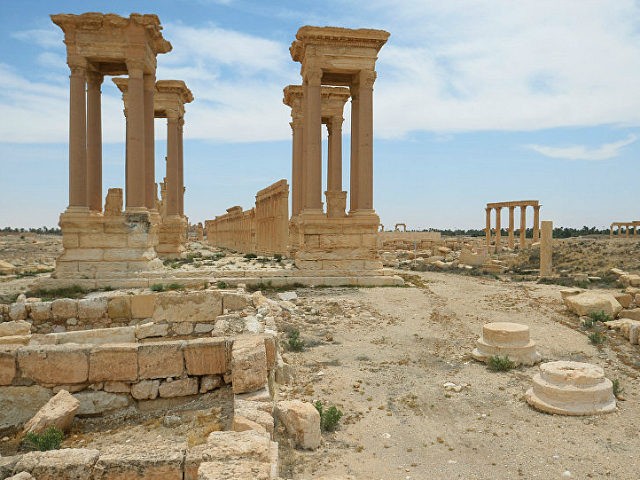The Islamic State is back in the ancient Syrian city of Palmyra, and they have resumed their appalling acts of vandalism against its historic treasures, destroying part of a Roman amphitheater and almost completely destroying the Tetrapylon, a distinctive collection of pillars near the entrance to the city.
CNN cites the Syrian Directorate General for Antiquities and Museums’ report that satellite imagery “shows significant damage to the Tetrapylon and the Roman Theater, caused [as a] result of intentional destructions by ISIS.”
NPR posted an even grimmer report, based on information from an activist within Palmyra, who said the amphitheater and Tetrapylon have been “almost completely demolished.”
“The face of the Roman theater is a pile of rubble and only four of the Tetrapylon’s 16 columns appear to be standing,” said NPR reporter Alison Meuse.
When the Islamic State first seized Palmyra, it used “dynamite, fire, bulldozers and pickaxes” to ravage the UNESCO World Heritage Site, as NPR recalls. Their stated reason for these depredations is that they think pre-Islamic artwork is sacrilege, although they also like to sell captured artifacts for cash.
The UK Guardian recalls the destruction of the 2,000-year-old Temple of Bel and the Arch of Victory during the previous occupation, along with the savage beheading of 81-year-old archaeologist Khaled al-Assad, the city’s Director-General for Antiquities. The Islamic State held Assad captive for a month, grilling him for the location of valuable antiques, before murdering him in the street before dozens of witness, and putting his corpse on display as a warning to other Syrian regime loyalists.
ISIS was ejected from Syria last March, only to return in December with a horde of some 4,000 fighters. There was some global media anguish during their original reign of terror, but national antiquities director Maamoun Abdulkarim, a personal friend of the murdered Palmyra director, lamented the weak response to the new acts of Islamic State vandalism.
“This is a horror film and we will see more of it, as long as the city is under their control it will remain a hostage,” said Abdulkarim, as quoted by the Guardian. “This is a scandal. Palmyra is occupied and there is no outrage from the international community. We are trying to protect a civilisation. It’s beyond political considerations. There needs to be international solidarity.”
UNESCO Director General Irina Bokova did respond to the latest demolitions, calling them “a new war crime and an immense loss for the Syrian people and for humanity.”
“This new blow against cultural heritage… shows that cultural cleansing led by violent extremists is seeking to destroy both human lives and historical monuments in order to deprive the Syrian people of its past and its future,” Bokova said.
The Roman theater ISIS just trashed was the scene of a concert performed by Russian President Vladimir Putin’s friend, cellist Sergei Roldugin, during what turned out to be the city’s brief respite from ISIS control. Roldugin’s concert was meant to send a message. The Islamic State is sending a message of its own with dynamite.
The New York Times quotes an estimate from the Syrian Observatory for Human Rights in London that the demolition of the Palmyra sites happened on or around January 11. The Observatory hopefully adds that the destruction “could have been a demonstration of force before the militant group, which is under siege in Iraq and in Syria, retreats from the city.”

COMMENTS
Please let us know if you're having issues with commenting.